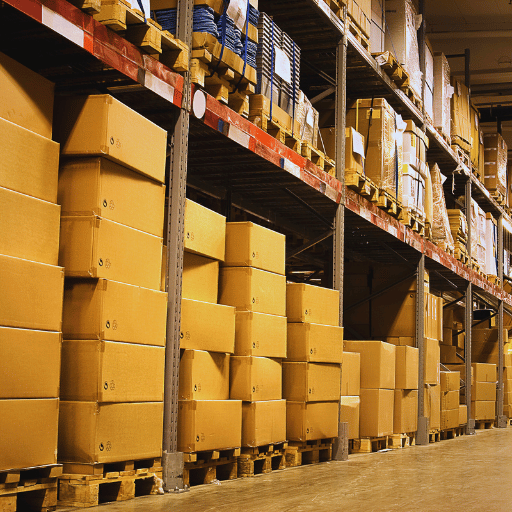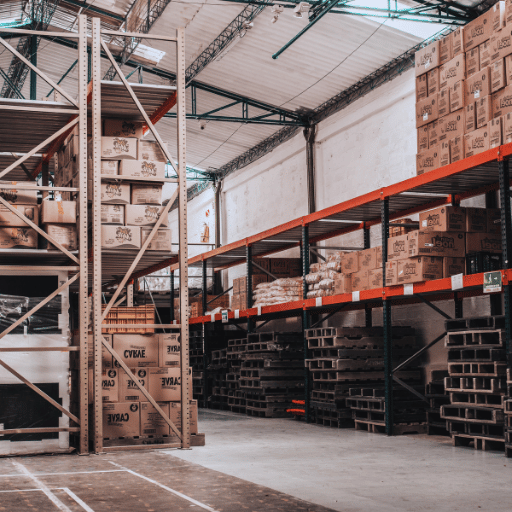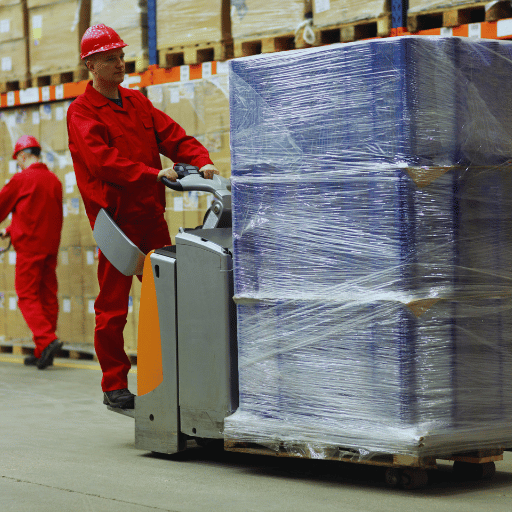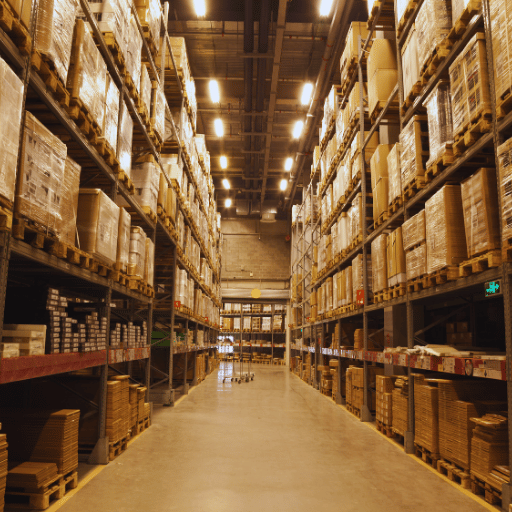Understanding international warehousing and logistics is critical for any business looking to expand its operations globally. With a supply chain that cuts across various countries, knowing how to manage storage systems, transport services, and distribution systems can either help the business be successful or result in costly inefficiencies. This article highlights the fundamental frameworks of international warehousing and logistics, which include the location of a warehouse, the legal requirements of a warehouse regarding movement over borders, modern technology in logistics, and more. If you are an advanced trade and logistics manager or even a novice to international commerce, this article will improve your understanding of how to enhance your supply chain and remain relevant in a globalized world.

An international warehouse is a storage depot based in a foreign country or area, specifically set aside to aid in international supply chains. It functions as a central location for the receipt, storage, and distribution of products to world markets, thereby enabling companies to shorten shipping time, decrease transport expenses, and effectively cater to local customer requirements. These warehouses serve an important function for overseas trade by guaranteeing the availability of goods within the prescribed limits of regional policies and inventory control rules.
Global logistics and supply chain operations are best optimized with the help of international warehouses. It allows companies to keep stock of products nearer to their target markets, which aids in reducing both delivery and transportation expenses. These warehouses help in maintaining the inventory at a regional level for speedy order processing, heightened consumer satisfaction, especially for overseas parcels, and improved order processing timelines. Not only this, but warehouses support businesses in meeting local compliance laws, which include boundaries, quality control laws, and taxation needs, allowing smoother border crossings.
Global supply chain systems rely heavily on international warehouses as strategic points owing to their capabilities of controlling inventory and operating on advanced logistical systems that manage processes and structures in a warehouse setting. Such international warehouses make use of modern technology like Warehouse Management Systems (WMS) to automate inventory levels, shipment control, and order fulfillment. To lower human error during the sorting, picking, and packing stages, various automation tools such as robotics and conveyors are being adopted at an increasing rate.
These facilities are typically located in strategically chosen trade hubs to minimize shipping distances, often near ports, rail terminals, or major distribution highways. For instance, key locations such as Hong Kong, Singapore, and Rotterdam serve as central points for world trade.
Recent figures indicate a significant increase in the need for international warehouses. According to a recent analysis of the market’s international storage and warehousing industry, there is an expectation to grow by 7% between 2022 and 2027, owing to spending by regions and countries competing in the global trade market. Other factors, such as collaboration with customs offices, are also expected to improve international shipment processes, enabling faster travel of goods between borders.
Now, energy efficiency and sustainability have also become core components of international warehousing operations. Most modern facilities now use renewable energy, optimize fuel consumption through routing and scheduling for shipment consolidation, and implement green packaging to lower their carbon footprint. Cumulatively, these factors empower international warehouses to sustain the world economy while aligning with ecological, social, and institutional frameworks.
Despite both warehouses and distribution centers being integral components of the supply chain, they differ in their purpose, processes, and day-to-day operations in important ways.
1. Primary Function
A warehouse or a logistics facility works as a storage unit for goods, maintaining inventory for extended periods. These facilities intend to preserve products until there is demand for them by organizing the items based on categories or storage space –similar to how international warehouses operate efficiently with parcels. Distribution centers are particularly focused on shipment traffic, item movement, and goods flow. They serve as a processing hub for various operations that include sorting, repackaging, and shipping goods to retailers, distributors, or even customers expeditiously.
2. Speed of Operations
Generally, warehouses function on a slower timescale, focusing primarily on stock accumulation and preservation and the meticulous control of stock levels. In contrast, goods must breeze through distribution centers where speed becomes the dominant value and goods are often delivered within the same or next day. This is further enhanced in customer-focused supply chains and e-commerce-driven markets.
3. Technology Integration
Contemporary distribution centers frequently employ modern technologies for order picking fulfillment and logistics management. They are able to handle large volumes of inventory with high accuracy using WMS, automated picking systems, robotics, and real-time inventory systems. Warehouses, while also making use of technology, may not always deploy such high-velocity and dynamic systems because their emphasis is more on static storage.
4. Value Added Services
Most distribution centers also offer value-added services like product assembly, custom packaging, kitting, and even reverse logistics for returns. Conversely, Warehouses tend not to extend these extra services as their primary function is the secure storage of goods until they are ready for further distribution.
5. Location and Accessibility
To ensure effortless delivery and minimized transit time, distribution centers are usually located near strategic transportation locations like highways, ports, or urban centers. In comparison, Warehouses may not be as close to end customers or logistics pathways if their purpose is long-term stockpiling.
6. Flow of Inventory is critical in managing the efficiency of warehouses around the world.
Goods flow in and out of a distribution center’s inventory situation in a quick rhythm that resembles a JIT (just-in-time) processing system. In contrast to distribution centers, warehouses are more static, governed by slow-moving stock levels over longer periods.
7. Scalability and Market Trends
The already rapid growth of e-commerce is an example of a market trend that centers are starting to shift toward. A 2023 study showed that numerous distribution centers are integrated with colossal supply chains, with some of the facilities capable of dispatching millions of packages per day. Meanwhile, warehouses fulfill an important role for the manufacturing sector, where they are bulk stored and only occasionally moved, often positioned in conjunction with logistics firms for better control of the logistics.
These differences form a basis from which businesses can understand how to effectively choose the facility type that aligns with their supply chain objectives to enhance operational efficiency and customer satisfaction in the highly sophisticated logistical environment.

Individual warehouses may also operate within one of the supreme regional distribution centers Shein controls. The Shein brand makes efforts to control inventory costs as most other businesses do. Unlike its counterparts, though, Shein utilizes a relatively new concept of predictive analysis together with Artificial Intelligence, which assists the company in managing its inventories as well as forecasting demand. This enables optimal stock levels.
Global fast-fashion retailer Shein has an unprecedented logistics system in place to manage its international operations. With a network of warehouses throughout the world, the company combines advanced technology with a complex shipping framework. Shein utilizes large regional distribution centers, which guarantees the retention of inventory nearer to the critical markets.
Despite the criticism directed towards Shein regarding its overabundance of stock, its inventory turnover ratio is below average (roughly 3). However, reports indicate that Shein operates over ten warehouses globally. This includes the major facilities stored in the United States, China, and parts of Europe, which enable rapid order delivery.
Shein replenishes the stock within its warehouse, aiming to fulfill all real-time orders. Shein focuses on the final local mile delivery, which enables the company to broaden its reach to over 150 countries. In America, Shein has collaborated with other carriers like USPS and FedEx to guarantee order shipment.
Tisein has indeed faced criticism regarding its stock surplus, definitely on the criticism the company has received regarding overflowing stock from which almost every other fast fashion retailer suffers. Regardless of the inventory overload, a sharp sales decline due to slow supplier deliveries in summer collection capsules led to a significant drop in their turnover ratio of turns below 2.
Through technological advancement and a worldwide distribution network, Shein’s logistics strategy demonstrates how e-commerce enterprises can evolve to address the challenges of global demand while keeping in mind the customer’s need for speed and convenience.
Shein’s international warehouses aid in reducing the delivery time for international customers. The company places warehouses in regions that are most beneficial for the customers as well as the company to reduce the distance the products travel, thus enhancing the supply chain. For instance, Shein has North American warehouses that enable them to deliver products within the United States in approximately 6-8 business days. This is significantly better than the previous time associated with direct shipping from China. Similarly, warehouses in Belgium have reduced delivery time for certain areas in Europe to as little as 5 days.
This model of warehousing enables Shein to fulfill their customer’s orders faster as well as manage inventory on a local scale. As required, inventory items are shipped to the regional warehouses, they can dispatch them on short notice, thereby enabling the company to fulfill the order quickly and cut down on delay. Dictating inventory stock levels using forward-looking demand estimation tools increases warehouse resource efficiency as they can adjust the amount of stock they need to have.
Moreover, this international warehouse system resolves issues regarding shipping expenditures by facilitating bulk shipping to regional warehouses. Products can be dispatched via domestic carriers, which expedites delivery and reduces operational costs. The detailed planning of logistics paired with the placement of warehouses reflect Shein’s aggressiveness in meeting delivery efficiency and customer satisfaction within a competitive e-commerce environment.
SHEIN has developed an advanced order tracking system that enables customers to track their orders in real time. After processing an order, SHEIN sends an email or provides the tracking number via the “My Orders” section on its app or website. The order tracking number is now associated with a postal or courier service, which allows for detailed milestone tracking beginning from when the package leaves the warehouse.
Packages usually move through overseas fulfillment centers first, where the inventory is organized and the package is prepared for shipment. The truck carrying the package also makes stops with international freight shipping companies, clears customs in the receiving country, and gets serviced by domestic air transport. Users get notified as soon as the shipment tracking service acknowledges that the package cleared customs and is headed towards a domestic shipping center. The package is then picked up and brought to the terminal by local courier services such as USPS, DHL, and FedEx, depending on the country of the recipient.
According to the data, the majority of Shein orders are received within 7 to 15 days for standard shipping and within 3 to 7 days for expedited shipping, depending on the origin and destination of the order. Customers are advised to check their tracking information often since the shipping estimations may change for reasons outside of the company’s control, like weather conditions or delays at customs. Shein’s tracking system utilizes advanced milestones to reduce ambiguity and provide users with informational control about their packages midway through the delivery process.

The placement of international warehousing is important in maintaining the balance of the global supply chain because it decreases shipping time and shipping costs and improves customer relations. These strategic centers, which are placed close to regional markets, help businesses manage their inventories alongside demand with the help of logistics companies. As an example, recent data from the industry shows that companies that use international warehouses can lower delivery times by 50%, especially in e-commerce when speed is critical.
International warehouses also help businesses with the management of tariff and customs procedures. By keeping some goods at certain zones, companies can group their shipments and limit the number of times they need to send goods internationally, which helps them lower transportation costs. Studies show that using warehouses to group shipments can help cut logistics costs by 25% and reduce the negative impacts of excess shipping on the environment.
Moreover, these facilities help to improve stock control and risk management. Businesses can minimize the risk of stockouts in high-demand areas and overstock in low-demand areas with localized inventory. This equilibrium is vital for operational efficiency and consumer satisfaction in meeting delivery time expectations. International warehousing utilizes data-driven techniques and sophisticated warehouse management systems to help businesses formulate an uninterrupted supply chain network that can adapt to global demands.
Utilizing global warehousing enables the placement of stock closer to critical markets, which subsequently decreases shipping lengths and costs on foreign shipments. This enables shipment consolidation, route optimization, use of peripheral transport hubs, and achievement of low-cost logistics whilst enhancing delivery speeds.
Global warehousing is incredibly important in increasing delivery speed and customer satisfaction, especially for Shein, whose orders are fulfilled from numerous warehouses around the globe. Businesses can shrink the distance to the end consumer by distributing inventory globally. For instance, logistical studies show that having ‘hub and spoke’ regional warehouses improves transit times by 50%, which is important during peak demand periods.
Also, better stock positioning can be achieved using advanced technologies like predictive analytics and demand forecasting. These tell which items are frequently purchased to ensure that stock is located near key markets, which improves logistics and transportation. Enhanced Automated Warehouse Management Systems (WMS) help keep track of inventory and optimize order fulfillment processes, which further aid in providing prompt, dependable delivery services.
An example is seen in e-commerce logistics where businesses operating with regional hubs can deliver the next day or same day to over 80% of the customers residing in major cities. This covers meeting the demand for speedy shipping and increases operational efficiency, making international warehousing a vital component in worldwide supply chain frameworks.

When looking for an international warehouse, pay attention to the following guiding principles:
When comparing warehouse management systems (WMS) for effectiveness, consider the following:
When these criteria are applied, it becomes easy to select a WMS that resolves operational challenges.
The selection of a warehouse is comparatively easier with the help of Third-party logistics (3PL) providers as a result of their experienced knowledge, technological skills, and industry relations. Distributing logistical work to a 3PL helps in decision making and aquire appropriate facilities that consider all operational factors such as accessibility to major markets, growth potential, and the existence of relevant value-added services. Furthermore, most 3PLs have networks that guarantee distribution at minimum costs and optimize supply chain functions. This saves time otherwise spent on research while at the same time providing an appropriate warehousing solution, unlike doing everything yourself.

As business needs differ, so do public warehouses and private warehouses. Flexible and economical, public warehouses managed by third-party operators and leased out to multiple businesses are perfect for short-term storage or companies with changing inventory levels. Conversely, private warehouses are controlled and run by a single business allowing them to have full operational control, customization, and long-term permanence. As such, private warehouses tend to have a higher up-front cost and ongoing maintenance expenses, however, they become far more effective for businesses with a sustained high-volume storage requirement. Choosing between the two depends on criteria like budget, operational needs, and inventory trends.
A bonded warehouse is a secure storage facility that stores imported goods as they await the payment of customs duties. These warehouse ports are supervised by customs, permitting companies to keep goods in store while deferring the payment of tax or duty and thus paying tax at a later time. This flexibility allows a delay in duties payment until the item is ready for sale or distribution, which is especially beneficial for cash flow in international orders from the origin country. Moreover, bonded warehouses provide auxiliary services, including but not limited to packaging, labeling, and inspection. These warehouses are designed for companies dealing with foreign trade or with imported goods of high value.
The use of multiple warehouses in international shipping has strategic benefits for global supply chains. One positive aspect is the advancement of meeting delivery deadlines. Businesses can store inventory in numerous locations, which aids the positioning of goods closer to the end consumers, thereby cutting down transit time. According to industry reports, businesses employing multi-warehouse strategies can meet delivery commitments more than 50 percent of the time, which improves customer satisfaction.
A multi-warehouse system incurs high costs of operation but allows a company to consolidate shipments and lower the distance goods have to travel. This investment in inventory warehousing aids in optimizing cost, especially when the main warehouse is located strategically. Researchers state that supply chains operating under regional warehouse distribution models usually encounter an overall reduction in last-mile delivery costs by 15 to 30 percent.
Mitigation of risk factors is equally important. The operational resilience from disruptions provided by dispersed warehouse networks aids businesses significantly. For example, in some instances where natural disasters or geopolitical conflicts affect one region, stored inventory in other locations can supply to consumers. By utilizing this redundancy aid, businesses can save on costly delays and losses in revenue. With multiple warehouses, firms can better adhere to local policies and tariffs for different regions. Businesses can improve customs clearance and adapt to regulatory shifts more easily by storing products near the markets they service. This is especially important for nations with intricate import-export systems.
Lastly, multi-warehouse logistics allow for better scalability. Firms facing increased market demand can easily modify their operations by adding warehouses in new developing areas. Such flexibility enables sustained growth while simultaneously ensuring efficient delivery.
As depicted above, employing multiple warehouses in cross-border shipping not only improves the effectiveness and cost efficiency of the shipping processes but also provides agility, adaptability, and increased customer delight in the rapidly evolving global economy.

A: E-commerce shipping can be improved by International warehousing as it stores inventory in warehouses that are near different customers from other countries. This increases efficiency by enhancing order fulfillment, reducing shipping costs, and lowering shipping times. Companies can utilize their supply chain management by using international warehouses for inventory, which helps in the faster delivery of goods to customers abroad.
A: There are several benefits to using the Shein warehouse for order processing. The global warehouse network of Shein ensures that shipping times are facilitated as orders will be shipped from the nearest warehouse to the customer. This enables the timely delivery of packages. It also improves the management of the inventory that is done, and stockouts are minimized. Moreover, Shein warehouses are equipped with properly configured warehouse management systems, which help in the enhancement of order processing and improvement of the logistics functions.
A: International warehousing impacts shipping time for Shein orders very positively. By storing inventory in several global warehouses, Shein can execute and ship orders from the nearest warehouse. This strategy improves shipping time, especially for faster delivery options, and frequently supports express shipping services, which would be impossible if all order processing were through a centralized warehouse.
A: Problems that come with international warehousing and logistics include controlling the sophisticated inventory system that spans across multiple locations, the different regulations and customs policies in different countries, the coordination of international supply chains, and reverse logistics for returns. Furthermore, companies face challenges with global warehouses, such as operating languages, currency changes, and diverse shipping policies, especially with cross-border orders.
A: Factors like order volume, types of products offered, target market, and shipping objectives should be accounted for when selecting a warehouse for international logistics purposes. Some options include using third-party logistics or contracting with an international warehouse group, or building their own global warehouse network. The options available greatly depend on the revenue size of the organization, the budget available, and the inventory control and order fulfillment needs of the business.
A: Final package sterilization and inspection are critical steps in international warehousing processes, especially for specific product types. These procedures guarantee that the products comply with the sanitary and phytosanitary requirements of the importing countries. The warehouse’s pre-shipment sterilization and inspection processes help to avert the introduction of contaminants, conform to global agreements, and avoid product spoilage during transit. This is particularly true for food products, pharmaceuticals, and medical supplies.
A: Businesses can monitor their inventory and shipments in international warehouses through numerous sophisticated warehouse management systems and integrated tracking technologies. Such systems guarantee accurate and current information about the volume of stock available at all points in the warehouse network. As for shipments, a majority of international logistics companies provide invoice number tracking, which allows businesses and customers to track the shipment from the warehouse to the delivery address, guaranteeing clarity within the international supply chain.
1. Title: Warehouse Deployment: A Measurement-Based Comparison of Commercial Wi-Fi and CBRS Systems
Summary:
2. Title: Efficient Management of Onion Buffer Stocks: A Smart Warehouse Approach
Summary:
3. Title: The Role of Drones in the Different Modern Functions of Smart Warehouse Management
Summary: